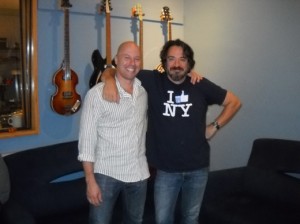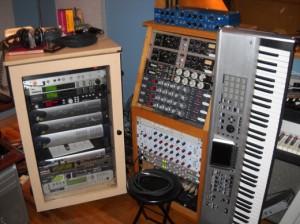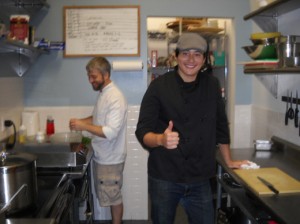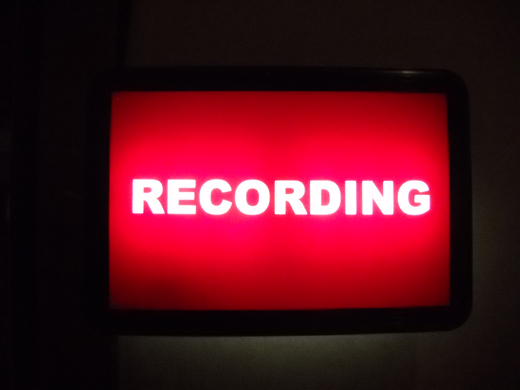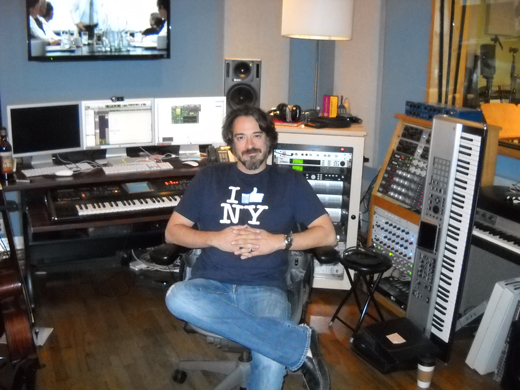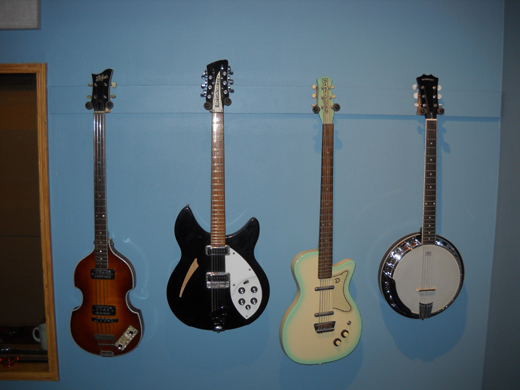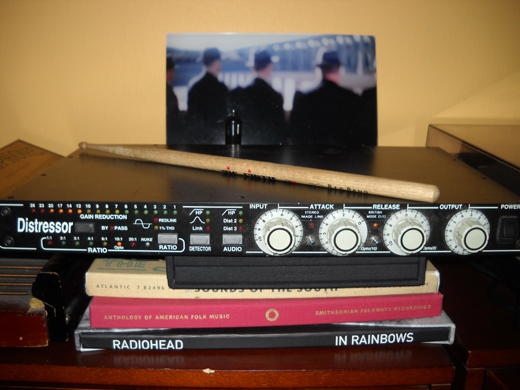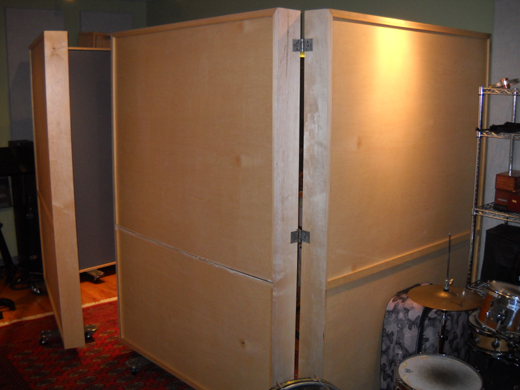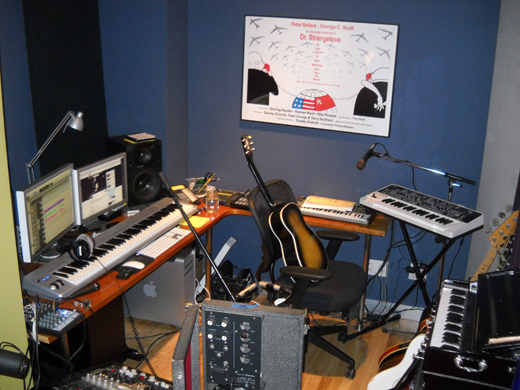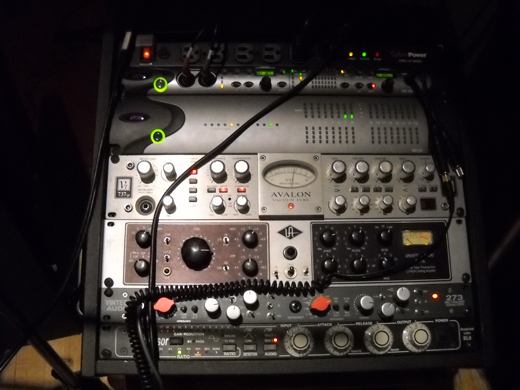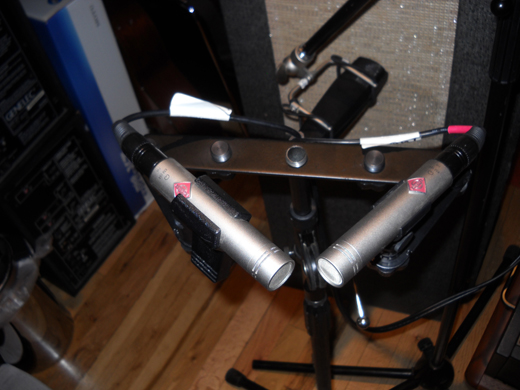Building a Smarter Music House: Butter Grows in SoHo
SOHO, MANHATTAN: How do you become an overnight success? It only takes about 14 years of busting your tail.
A perfect illustration of this measured move to recognition is Butter, a busy music-and-sound-for-picture company operating in the heart of SoHo. While this self-described “creative sonic collective” hasn’t been making a whole lot of noise about themselves, they’ve been doing it for plenty of other people: their 2012 reel is a Grade A brand list that includes Amex, Smartcar, Ragu, Sony, Mizuno, Dairy Queen, Audi, Mercedes, Dupont, and many more.
So where did Butter spring up from? Actually, this accomplished team of composers and sound designers – led by Creative Director/Composer Andrew Sherman and Creative Director Judson Crane — got its start in 1998 as a part of Fluid, which has long thrived in New York City’s extremely competitive video post and visual FX scene. But as Fluid’s music department got better and better, it became increasingly clear that it was in need of a brand of its own.
That’s why, in 2009, Butter became its own entity within Fluid. And as you dig deeper into what’s happened since then, you discover why this ambitious audio group represents smart music business in NYC right now.
Branding the Music
Fluid’s beautiful HQ is the kind of expansive, airy and stylishly appointed commercial loft that gives SoHo a very good name. Go past the in-house gourmet kitchen that feeds the crew daily, up the elegant interior staircase, head on back, and you arrive at Butter.
Ensconced in this luscious environment you’ll find four studios and a live room. It’s a roomy creative home for Sherman and a carefully cultivated squad of music-to-picture pros that includes Son Lux, Fred Szymanski, Kishi Bashi, and David Quattrini.
Making it tick on a daily basis is Butter’s Executive Producer Ian Jeffreys. A singer/songwriter who worked for years in the empire of NYC restaurant master Danny Meyer, Jeffreys takes an equal understanding of long-term business strategy, daily satisfaction through customer service, and – yes – music, to his work at Butter.
Production and post service providers are constantly debating whether it’s better to offer everything under one roof or to specialize. For Butter, the need to differentiate themselves from their comprehensive parent company had become clear.
“NYC has traditionally been a market that’s interested in specialists,” Jeffreys explains. “Whatever it is, you want the best for each thing – the best butcher, the best tailor. The same holds true for post production: You want the best sound designer, the best editor.
“Fluid’s concept — that there was a company with both disciplines [visual and audio] acting on a really high level – people couldn’t get their heads around, even though you can be phenomenal at both. With the name change, we have the separation. People know it’s the same company, but the operations of an editorial company and a music house are pretty different. Delineating in name and brand made a lot of sense, and allowed us to pursue different goals where appropriate – we’re clearly not joined at the hip, even though we share a space.”
Seceding from the Fluid name, which like any brand took years to establish itself, was a potentially risky move. “Like many business decisions, you’re never 100% sure if it’s the right thing to do,” Jeffreys states frankly. “But we’re all seeing that it has worked. We have an incredibly strong reel right now, we’re working on better, higher-profile projects, and our clientele is more diverse than they’ve ever been. It’s funny, because although it doesn’t feel like we’re doing things terribly differently, the results are clearly different.”
Managed Growth
One thing that’s affecting the results is that Butter’s in-house talent and support pool are consistently growing – both by necessity and by design.
“We’ve had an extremely busy year — over the summer we had a high level of business and it was a challenge to keep up the pace,” says Jeffreys. “We have business goals every year, financial milestones that we’re trying to meet, and we saw that if were going to make our next round of goals, we just needed more people. We were working at maximum capacity, and to sustain it additional people needed to be hired.”
In expanding its staff and the facilities to accommodate them in-house, Butter’s bucking the growing trend of decentralized music houses, where producers virtually direct a global network of composers. “In the past few years you’ve seen music companies working on a skeleton crew model,” Jeffreys states. “A lot of them have downsized: it’s a producer with a phone, and they know a bunch of freelancers that they call.
“That can work sometimes, but in terms of the end product and its quality, it’s not consistent. And it’s harder to grow as a company and build your identity when you don’t have a core group. We’re making a conscious choice to go in a different direction.”
Butter’s creative directors, composers, and sound designers are backed up with support from Jeffreys, Associate Producer Annick Mayer, Production Assistant Ryan Alons, and Director of Sales Katie Northy. An LA office is in the midst of coming online. In addition, a full-fledged audio post mixing facility, Mr. Bronx, is on the floor.
Put together, they provide clients with a professional, dedicated group. And having a high-functioning unit makes a difference to the discerning advertising, film, and video game media decision makers that Butter is working with. Jeffreys points out that simply changing the name on the door didn’t turn the group into Butter — it took time to find themselves and evolve.
“We have a really strong team, but I think there was a period when we weren’t capitalizing on our strengths enough,” he says. “We weren’t following up on our successes, we certainly weren’t looking to publicize ourselves, and we didn’t have as clear of a plan for growth.
“In the last couple of years, it’s been my approach to create a plan, set goals for the future, and work towards those. In the process, we want to find ways to maximize every opportunity that we have. So rather than stick to the most traditional models of composer/producer/sales, we find the strengths of every person on the team and tailor our operations to those strengths. That has helped us move forward.”
How Composers Make the Cut
This seems like a crew many a composer would want to row with, and Jeffreys outlines Butter’s criteria for the sound creators who make it on their roster.
“First and foremost,” he says, “we want to see a reel from someone. I want to know that this person has spent time working to picture, and worked their way around creating underscore. Its one thing to create a well-crafted piece of music, it’s another to understand how that music needs to supports film or picture.
“Then we want to see record-quality engineering and production. That’s the bar. If it doesn’t sound as good as something on the radio, it’s not really worth considering.”
The toughest test of all: a musical personality. “We want to see a point of view. I think our company has been strong in that each of our composers, while they are able to create music in different styles, all absolutely have their strong suit. You give them any creative brief – orchestral, vintage pop, dance, electronic – they’re able to do it all, but they each have their sweet spot.
“Andrew is phenomenal at orchestral writing. I think of him as the John Williams of the commercial world, with his beautiful orchestral scores. Judson is really great at creating pop-style tracks that have a quirky element, but are more compositional in nature. Son Lux, who’s based in LA, is known for chamber and dark electronic music. Another composer might be strong with dance and hip hop and top 40 sounds, will still another does fantastic, quirky electronic remixy stuff.
“They all cover a different part of the spectrum, which is great when we’re submitting music for a job: You’re not going to get nine of the same thing. You’ll get different versions of an idea. I think that really helps a project, and that’s where we want to continue to focus our services in the future – giving a set of compositions to our clients that covers a wide spectrum of possibilities.”
Butter also finds fresh sound sources through an artist residency it’s established, where talented composers, writers, and artists can work in their studios for a month. Johnny Rogers, Leah Siegal (Firehorse), Andrew Judah, and Len Cavanaugh (Soul Mafia) have all taken part so far.
“They come in and kind of see how we do business,” says Jeffreys. “They have access to the state-of-the-art tools in the studio, all of the instruments, and they get a catered lunch every day. It’s a creative home for an artist. We give them funding to create new music, which we will then represent in our library. It’s become beyond what we initially expected – it’s this mutually beneficial and inspiring process.”
Project Focus: Mizuno
A real-world example of Butter’s approach can be experienced via Judson Crane’s arresting score for the spot “Manifesto”, a :60 micro-movie for shoe maker Mizuno.
Mizuno Manifesto from Butter. music + sound on Vimeo.
“The Mizuno spot really exemplifies how we work,” says Jeffreys. “Every Butter composer explored in a broad range of directions. It was definitely a long process, but I think it was a very rewarding one.
“For ‘Manifesto’, we talked about capturing the duality of the runner’s experience There’s the physicality and the strenuous push that’s needed on the athletic side. Then there’s also this internal and eternal, meditative sensation that comes from running.
“Judson’s score is an outstanding piece of music. It’s compositionally strong, it’s got a lot of great live performances featured in it, and the way he engineered it is really inventive. That’s cello that you hear in the beginning with a tremolo on it – it’s a unique sound you don’t hear every day. And I love the ending — it feels like it will just swallow you with the sound.”
Going Goal-Oriented
From his Executive Producer perspective, one of Jeffreys’ top directives is to streamline communications between networks, agencies, content producers, and Butter’s composers.
“I like to think of myself as an interpreter,” he reflects. “There’s an old quote that I reference a lot, ‘Talking about music is like dancing about architecture.’ Our clients are primarily writers and art directors whose strengths lie in words and visual media. But when it comes to music, not all clients are as strong in talking about it.
“One of my primary functions is facilitating the communications between creative groups and composers, and finding a piece that will satisfy everyone.”
Jeffrys isn’t the first to draw parallels between running an audio business and a restaurant. But his years of experience working for Danny Meyer – whose Union Square Hospitality Group includes such decorated NYC restaurants as the Union Square Café, Grammercy Tavern, Blue Smoke, and Shake Shack – give him a genuine point of comparison between cuisine and commerce.
“I think the restaurant analogy works for a lot of businesses,” he says. “Most businesses deal with the front of house and back of house just like a restaurant – there’s the sale, relationship, and the production.
“I worked for Danny Meyer at Blue Smoke on both sides of the line. He runs an incredible business, and watching him manage production, organize a staff, and prepare for a large volume of business taught me a lot about organization and time management. When you’re under high-stress conditions and trying to maintain relations with the clientele, it doesn’t hurt to have restaurant experience to teach you how to manage all of that in a graceful way.”
So if you want fries with that, just ask. But at the same time that Butter is making sure the daily special goes swimmingly, their edge comes from the ability to plan far in advance – then make it happen on time.
“If you’re not setting goals, you’re just treading water,” Ian Jeffrys says. “When you have a desired endpoint that you can focus your will towards, it may take longer than you want it to, but you do make headway and get closer to that goal.
“Otherwise, you’re just grabbing the low-hanging fruit and not really reaching. I don’t think that’s the way to create a sustaining business. But when you hit your marks, that feels very good: It gives everyone momentum to do more, and try new things.”
— David Weiss








